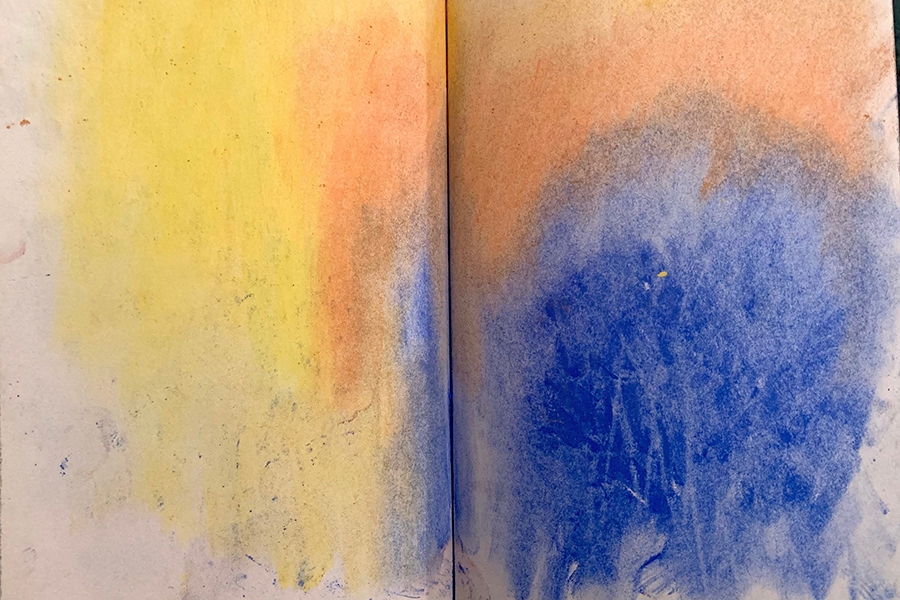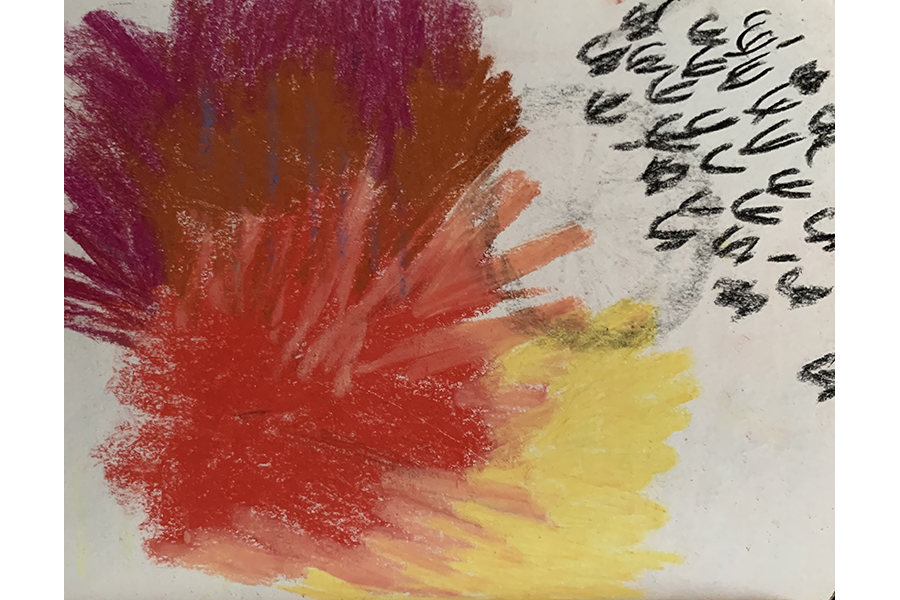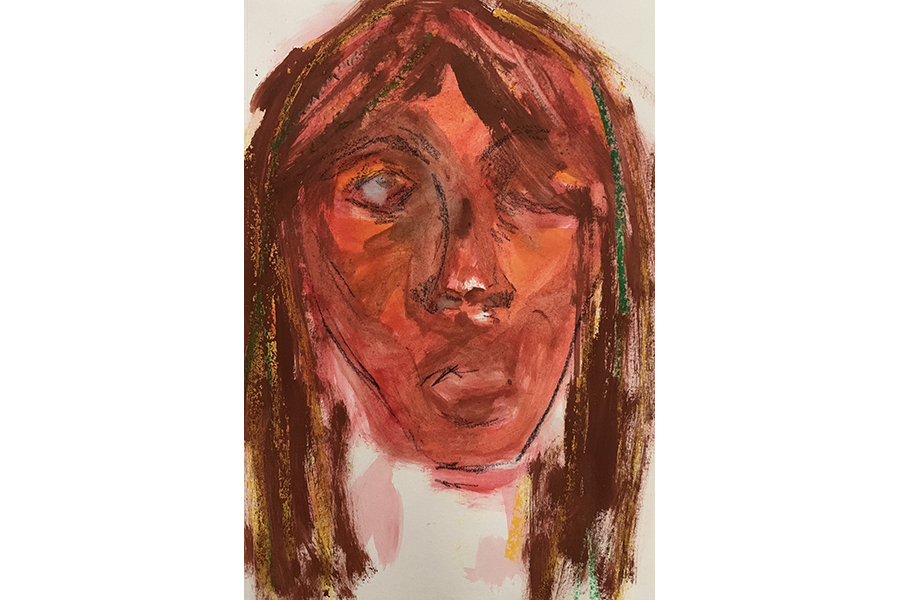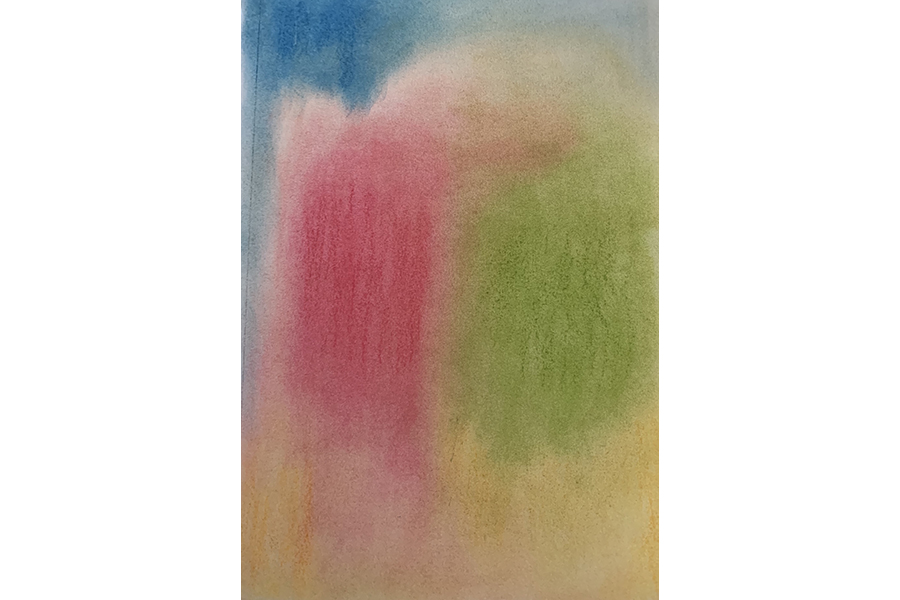Art as Illuminations
Striking a Match
Art as Illuminations
The relationship between Lily Briscoe and Mrs. Ramsay in Virginia Woolf’s To the Lighthouse is significant in understanding Lily’s character and her painting that finds itself at the center of the story. Each character desires intimacy and unification with Mrs. Ramsay while still remaining very much aware of her faults. More than any other character, Lily recognizes the willfulness of Mrs. Ramsay but yearns for her approval and protection. This desire for unification is what stands in the way of each characters’ fulfillment of their creative endeavor; Mr. Ramsay believes his work as a philosopher has reached a point it cannot progress past, and for Lily it is the completion of her painting. What they find beautiful is not necessarily what’s best for them, as they can only accomplish their intellectual and artistic pursuits after they overcome Mrs. Ramsay’s dominance. In order for Lily to finish the painting, she must understand her personal relationships, specifically with Mrs. Ramsay, to the point where she is no longer controlled emotionally. Lily’s inability to strip Mrs. Ramsay of her “powers,” which Lily refers to as a “work of art” itself, is the obstacle that stands in the way of her completing her painting. Once Lily dominates her own emotions—which are tangled up in Mrs. Ramsay’s perception of her—she is able to pursue her creative calling. We can use Lily’s vision as a way to understand the function and beauty of art in a global crisis.
How we first come to understand Lily, or rather how Woolf allows us to see her, is through others’ responses toward her. Mrs. Ramsay first describes Lily’s inadequacy by stating, “with her little Chinese eyes, and her puckered-up face, she would never marry; one could not take her painting very seriously.”1 Woolf then uses Mr. Bankes’s perception of Lily to reveal another aspect of her insufficient character: “alone, poor, and without the complexion or allurement of Miss Doyle.”2 Both remarks about Lily’s character encourage the readers to believe this is also how Lily thinks of herself, aware of “her own inadequacy, her own insignificance.”3 We expect Lily to resent Mrs. Ramsay, for she disapproves of her chosen lifestyle, but Lily’s feelings are rather ambivalent towards her. Sometimes she finds herself wanting to “fling herself at Mrs. Ramsay’s knees and say I love you,” but also recognizes her highhandedness, her willfulness, and how she can be so commanding.4 Lily is aware of her faults but she still desires a more permanent union with Mrs. Ramsay, both physically and emotionally. She acknowledges how Mrs. Ramsay’s ways are mixed with her obsession to control what she cannot understand. She holds not beauty nor knowledge, but rather the secrets which Lily believed “people must have for the world to go on at all.”5 These answers Mrs. Ramsay carries are acts of love, which Lily realizes is what ultimately brings unification. This is an important revelation for Lily’s character, as overcoming Mrs. Ramsay’s dominance is only possible through this act of loving. When catching a glimpse of Mr. and Mrs. Ramsay with their son James, Lily identifies a state of “being in love that flooded them, becoming part of that unreal but penetrating and exciting universe which is the world seen through the eyes of love.”[fnWoolf, To the Lighthouse, 46.[/fn] She explains how these little moments, these “separate little incidents” that make up life, become unified and whole in the state of love, becoming “curled and whole like a wave which bore one up with it and threw one down with it, there, with a dash on the beach.”6 This is a precursor to the major revelation that Lily has at the end of the novel, when she realizes Mrs. Ramsay’s power is similar to that of love, and similar to Lily’s own role as an artist: being able to bring together the “this and thats” of life.7
The role that Lily’s painting plays in navigating the relationship between herself and Mrs. Ramsay is a complicated one. We can better understand Lily’s process of creating a painting or executing her vision when she explains her way of looking at her art, and really the outside world, to Mr. Bankes. The subjects of Lily’s painting are Mrs. Ramsay and James, represented by a purple shadow. Bankes says he can’t seem to understand Lily’s vision, as he understands the function of art to be a portrayal of a specific moment in exact likeness, like his painting of the cherry trees in blossom on the banks of the Kennet. Lily says the goal is not likeness, but rather lights and darks, here and there, creating shapes, colors, and forms devoid of meaning and representational of a reduced, universal idea. Bankes seems to understand, stating:
If there, in that corner, it was bright, here, in this, she felt the need of darkness. Mother and child then, objects of universal veneration, and in this case the mother was famous for her beauty—might be reduced, he pondered, to a purple shadow without irreverence.8
Here we see the function of art, or specifically Lily’s vision, creating a connection between herself and another character, Mr. Bankes. Bankes questions why “the sight of [Mrs. Ramsay] reading a fairytale to her boy had upon him precisely the same effect as the solution of a scientific problem.”9 The effect of Mrs. Ramsay’s love on Bankes is parallel to the effect on Lily: this moment of “illumination” for Bankes is brought on by understanding Lily’s painting, and therefore understanding the function of Mrs. Ramsay’s love. Like Lily, Bankes’s intellectual accomplishments, such as the solution to a scientific problem, are only possible through understanding Mrs. Ramsay’s “act of loving.”
The lights and darks that Bankes witnesses Lily piece together on her canvas is how she reduces meaning and experiences into symbols through painting. Lily further explains this when she sees Mr. and Mrs. Ramsay watching their kids play ball, when suddenly “the meaning which, for no reasons at all, descends on people, making them symbolical, making them representative, came upon them, and made them in the dusk, the symbols of marriage, husband and wife.”10 She explains this brief moment where the sense of how things truly are has been taken away, when in the “failing light, they all looked sharp-edged and ethereal and divided by great distances.”11 She uses the purple shadow to represent one of these brief moments, specifically Mrs. Ramsay reading to her son. The symbolical outline that envelops these characters in these brief moments, what Lily calls “illuminations,” is what she tries to capture in her paintings: making moments—the this and thats, the lights and darks—permanent, unified under the state of “love.”
Woolf allows the readers go deeper into Lily’s mind, analyzing her thoughts and how she responds to the rest of the characters during a dinner party. Her painting becomes her escape from Mrs. Ramsay’s dominance, ultimately setting her free. When taking note of the pity Mr. Bankes is receiving at the table, from herself and the Ramsays, Lily thinks:
He is not in the least pitiable. He has his work. She remembered, all of a sudden as if she had found a treasure, that she had her work. In a flash she saw her picture, and thought, Yes, I shall put the tree further in the middle; then I shall avoid that awkward space. That’s what I shall do. That’s what’s been puzzling me.12
Rather than facing Mrs. Ramsay head-on, as a way to conquer her dominance, Lily retreats into her thoughts, avoiding any possible interaction with Mrs. Ramsay by thinking about the painting; mainly its composition and how she will complete it. This is what causes her to believe that the position of a tree in her painting is the issue, representing that her retreating from Mrs. Ramsay is the main obstacle in front of her, as she will never understand her personal relationships and therefore never understand what’s ultimately in the way of her creative endeavors. Rather, she will blame the tree.
Precisely the moment when Lily comes to terms with her relationship with Mrs. Ramsay is after Mrs. Ramsay has passed. Lily is reflecting on a moment at the beach, while she was skipping rocks with Charles Tansley and Mrs. Ramsay was writing letters, watching from under the shade of a rock. Lily realizes the whole of the scene was held together, somehow, by Mrs. Ramsay, and this is when she realizes the power of a human soul, specifically Mrs. Ramsay:
That woman sitting there writing under the rock resolved everything into simplicity; made these angers, irritations fall off like old rags; she brought together this and that and then this, and so made out of that miserable silliness and spite, something—this scene on the beach for example, this moment of friendship—this moment affecting one like a work of art. “Like a work of art,” she says to herself.13
Mrs. Ramsay’s power to bring together the “this and that” moments is precisely the same as Lily’s ability to bring together the lights and darks, the “here and there” of a painting; both are making something unified and permanent out of a fleeting moment, and why Lily refers to Mrs. Ramsay’s powers as a work of art. She continues stating that The Great Revelation had never come, but instead:
There were daily miracles, illuminations, matches struck unexpectedly in the dark; here was one. Mrs. Ramsay bringing together this and that, Mrs. Ramsay saying ‘life stand still here’—this was of the nature of a revelation. In the midst of chaos there was shape, this eternal passing and flowing was struck into stability. Life stand still here, Mrs. Ramsay said. She owed it all to her.14
In these split-second, stable moments, the meaning is constructed; we see this in Lily’s first description of these instances when Mr. and Mrs. Ramsay are watching their kids play catch. When Lily is able to bring together the “this and thats” of painting and construct something permanent from a moment, she connects herself to Mrs. Ramsay personally, and this is how Lily finally overcomes her dominance. Mrs. Ramsay is the shape or form that holds everything together, a unification that eludes Lily in her painting until the end of the novel,
*
As we are left to deal with our own innermost thoughts during this time of isolation, art serves the same purpose of unification in the present as in the context of Lily Briscoe’s vision. Artists and musicians have turned to social media to connect with their audiences, showcasing art shows, studio visits and in-home concerts, poetry readings, album release parties, Q&As with fans, how-to’s and DIY’s (be it baking bread or crocheting), and even fundraisers on a national and local scale. Whether to trivial or essential ends, art is being used as a primary mode for human connection in an unprecedented time of distance, loneliness, and isolation. The same way Lily Briscoe needed to overcome, and understand, her personal relationships in order to take on her creative endeavors, we must learn how to communicate differently, live cautiously, protect our communities, and ultimately become unified with one another in a time of change with no apparent light at the end of the tunnel. Art is the “illumination” that shows us however impossible things seem to overcome, it can be used as a way to unify people during a time of crisis.
These last few months have taught me that everyone is an artist, because art is simultaneously this transcendental thing that exists outside of us and this inherent thing that exists within all of us. We’re all artists and capable of making art, but at the same time, it exists in another realm beyond human knowledge, or understanding, as we use it to try to comprehend the human condition. We can attempt to control and manipulate a creative work, but there is a point within a work of art where the elements of the piece (be it plastic arts or a piece of music) start working together in a spiritual way, outside of knowledge or beauty. We’re not fully in control of art, but we use it to try to extend our notion of control. Art is contradictorily coherent, a huge paradox that allows us to create from what we know but simultaneously question everything we think we do. It allows us to feel some sort of control but also requires that we give some up.
For some, or a lucky few, quarantine provides time and space for the act of process, slowing down and interacting with one another and the world around us under this state of “being in love” that Lily describes. It’s not that life is grander or more intriguing than it was before (in fact quite the opposite) but that we must search even harder for the moments of visibility, the moments of friendship, love, and unity. We use art as a way to get to these moments.
For most of my life, I’ve always felt the greatest connection with music, but it has been interesting to experiment with other forms of art. Playing with friends over Facetime and piecing together songs over the phone has been an interesting way to virtually connect with people, while painting and drawing is more of a private, psychic connection to a home that’s not physically accessible to me right now. Being stuck in New York has led to a lot of drawings or paintings that exist as an ode to California, to home, where Spring exists and the month of May means T-shirt temperatures. Some of it expresses how I feel internally, but displayed externally in a self-portrait. And some of it shows my frustration with New York, but also the resilience of its people.
So this is me striking a match. Trying to make permanent the moments where I do see the light at the end of the tunnel, the illuminations that make sense of the world and my place in it. Like Lily, I have to overcome my own Mrs. Ramsay; not quarantine, but myself in quarantine. Using the creative process to make sense of the change, to remind us we’re really all alone together, and at the end of the day, when you’re sad and lonely and can’t remember what day it is, there will always be art.
- Virginia Woolf, To the Lighthouse (Harcourt, 1989), p. 17
- Woolf, To the Lighthouse, 18.
- Woolf, To the Lighthouse, 19.
- Woolf, To the Lighthouse, 19.
- Woolf, To the Lighthouse, 50.
- Woolf, To the Lighthouse, 47.
- Woolf, To the Lighthouse, 160.
- Woolf, To the Lighthouse, 52.
- Woolf, To the Lighthouse, 52.
- Woolf, To the Lighthouse, 72.
- Woolf, To the Lighthouse, 73.
- Woolf, To the Lighthouse, 73.
- Woolf, To the Lighthouse, 140.
- Woolf, To the Lighthouse, 161.






